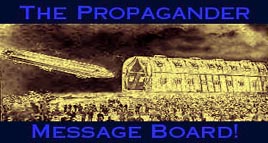
November 14, 1957: Memorandum From the Deputy Director of Intelligence and Research (Arneson) to the Secretary of State:
SUBJECT: Impact and Implications of Soviet Earth Satellites
In view of your interest in the impact and implications of the Soviet earth satellites, you may wish to note the following summary of our recent estimate on this subject brought up to date to include Sputnik II. 2
1. Following its announcement of Sputnik I on October 14, Soviet propaganda emphasized the satellite's scientific aspects but relied for the most part on free world sources to bring home its military implications. The rest of the Bloc elaborated both themes in volume. The second launching produced a smaller volume of propaganda along similar lines.
2. Outside the Bloc, Sputnik I tended to remove misconceptions about Soviet technological capabilities and to confirm its temporary ICBM lead. The resulting widespread concern was deepened by Sputnik II, which caused many to believe that the gap between the US and the USSR was wider than first realized. Although these views were tempered by the general belief that the US will match the USSR achievement in reasonable time, Sputnik II raised at least some doubts as to US ability to catch up quickly.
3. The USSR's prestige has risen substantially and the US has suffered a serious, although not decisive, setback. World opinion tends to hold that the sputniks per se have not altered the strategic balance of forces in the short run, since Soviet ICBMs are not yet thought to be in mass production. Nevertheless, some new weight has been lent to Soviet foreign policy pronouncements and increased credibility may attach to Soviet claims in other fields.
4. Observers throughout the world agree that beyond the immediate future US ability to match the Soviet advance is crucial and that a significant lag would have far-reaching effects. In Western Europe, particularly, this has led to the conviction that NATO efforts must be strengthened, collaboration increased, and US leadership revitalized. In addition, in Europe and leading countries elsewhere, the sputniks gave new urgency to problems of strategy and military planning arising from the advent of ballistic missiles.
5. The USSR will make further intensive propaganda efforts to exploit the situation but probably does not believe that it is justified in radically altering its foreign policy for the present. Nevertheless, the Kremlin will experience some gain in confidence, may expect to seize political opportunities at less risk, and will exploit any sign of US failure to meet the challenge.
6. Free world opinion will be influenced by the Soviet achievement for some time to come. In Europe, pressure for increased US, US-UK and NATO effort and collaboration will continue. At the same time, further stimulus will have been given to development of European advanced weapon capability, partly because of continuing anxiety that the US may gradually withdraw once it has an operational ICBM. Fear that the US will enter bilateral negotiations with the USSR will also continue to be felt. Elsewhere in the world no major realignments seem probable in the short run, although attitudes will be influenced by progress in the weapons race. The status of US bases is for the present not likely to be affected.
7. Delayed or insufficient demonstration of United States success in the ballistic field would produce political and psychological effects of substantially more serious nature-for example, on attitudes toward neutralism and on the cohesion of alliances.





Click to join 3rdReichStudies

Disclaimer:The Propagander!™ includes diverse and controversial materials--such as excerpts from the writings of racists and anti-Semites--so that its readers can learn the nature and extent of hate and anti-Semitic discourse. It is our sincere belief that only the informed citizen can prevail over the ignorance of Racialist "thought." Far from approving these writings, The Propagander!™ condemns racism in all of its forms and manifestations.
Fair Use Notice: The Propagander!™ may contain copyrighted material the use of which has not always been specifically authorized by the copyright owner. We are making such material available in our efforts to advance understanding of historical, political, human rights, economic, democracy, scientific, environmental, and social justice issues, etc. We believe this constitutes a "fair use" of any such copyrighted material as provided for in section 107 of the US Copyright Law. In accordance with Title 17 U.S.C. Section 107, the material on this site is distributed without profit to those who have expressed a prior interest in receiving the included information for research and educational purposes. If you wish to use copyrighted material from this site for purposes of your own that go beyond 'fair use', you must obtain permission from the copyright owner.





